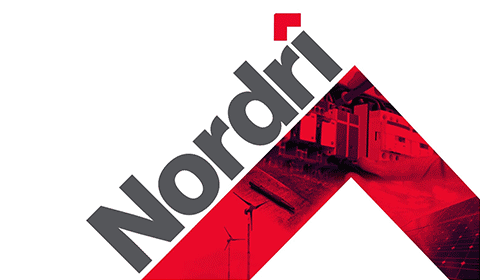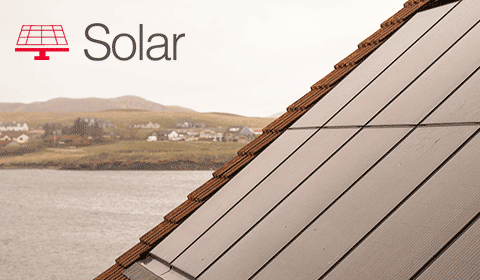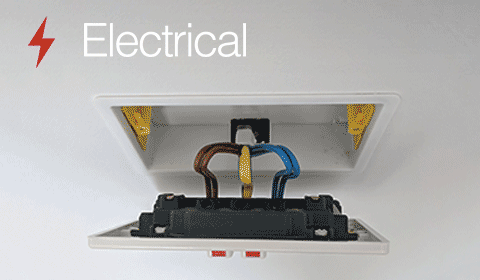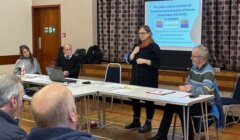Viewpoint / Impacted by turbine acoustic pollution
Following last night’s (Thursday) public meeting in the Tingwall Hall on turbine noise and adverse health impacts, Westside resident Dr Sally Huband provides some background for those who were unable to attend the meeting.
“This is my overview (and mine alone) of the characteristics of subaudible turbine acoustic pollution and their direct and adverse health impacts.”
Shetland News’ separate report on Thursday night’s meeting can be read here.
Characteristics of subaudible turbine emissions
Turbines have a unique acoustic signature. Pulses of pressure are flung out when turbine blades pass the tower and these blade pass emissions can be described as low frequency noise emitted at an infrasonic rate. Sound pressure levels of blade pass emissions can be more than 20 dB over background environmental levels.
The lower limit of human hearing is 20 Hz. A sound wave of this frequency measures 17.1 m peak to peak and will flood a building. Blade pass emissions can be as low as 0.1 Hz. You cannot stop them from entering your home.
In certain weather conditions such as temperature inversions (in which warmer air overlays colder air) sound pressure waves travel further. These weather conditions increase the risk of subaudible turbine emission harm. Certain landforms can also influence the fallout reach of turbine acoustic pollution.
Infrasound released by ocean waves is very different in character from subaudible turbine noise, the two are not comparable as has been claimed by David Thomson of Shetland Aerogenerators (Viking LLP letter to the Shetland Charitable Trust, 5 September 2013).
More recently, David Thomson has justified the 200 m high size of the proposed Neshion turbines with Bigger machines means more output. He neglected to mention that bigger machines also means more acoustic pollution which adds an interesting slant to his Neshion tagline “in Shetland, for Shetland, by Shetland”.
Health impacts
Blade pass emissions can cause barotrauma (injury caused by a change in air pressure). The vestibular system can be impacted (the sensory system in the inner ear which is responsible for balance and spatial orientation) and neural pathways can be disrupted including auditory processing and autonomic nervous system control.
Impacts can include
- Ears popping
- Feeling of ear fullness
- Ear pain
- Hyperacusis with pain (sound can trigger pain)
- Tinnitus
- Headaches
- Nausea akin to motion sickness
- Balance disruption including risk of injury from falls
- Racing heartStomach issues
- Feelings of fear and terror
These adverse and direct health impacts are compounded by the difficulty of sleeping and resting in a house polluted by turbine acoustic emissions.
Wind turbine emission fallout zones become no go areas for sensitised people and may be as much as 10-20 km from a turbine. This is a critical issue for island communities like Shetland.
If Neshion, Beaw Field, Mossy Hill and Energy Isles are built, significant areas of Shetland, including Lerwick, will become unsafe for people sensitised to turbine emissions.
A significant minority of people are initially more susceptible to subaudible turbine emissions but as turbine emission harm is dose related, more people can succumb over time.
Continued regulatory failure
The turbine noise regulation, ETSU-R-97 only applies to audible emissions and as such, prevents local authorities from exercising duty of care responsibilities. ETSU-R-97 needs to be replaced with BS4142, as advocated for by the Independent Noise Working Group.
ETSU was developed in the 1990s without any medical or public health input and with the intention of ‘reasonably’ protecting wind farm neighbours without ‘unreasonably’ restricting wind farm developers. It uses an A-weighted scale which is designed to mimic human hearing and as such, filters out the most damaging element of turbine acoustic emissions, subaudible noise in the form of blade pass emissions.
The 2023 review of ETSU by WSP consultants for the Department of Business, Energy and Industrial Strategy (now the Department of Energy Security and Net Zero) states that “…reported symptoms of ill-health are more likely to be psychogenic in origin.” (page 114).
This ‘nocebo’ theory has long been promoted by a wind industry allied acoustician called Geoff Levanthall who came up with the ‘what you cannot hear cannot hurt you’ wind industry mantra. I understand that Statkraft are now repeating this mantra to community council members here in Shetland.
Incidentally, last Friday, I joined others in a meeting hosted by Alistair Carmichael MP. I asked Statkraft’s Head of Onshore Wind UK, Tom Walker, John Thouless (Statkraft’s Principal Wind Project Manager) and Seumas Skinner (Statkraft’s Community Liaison Manager) to describe wind turbine acoustic signatures for all present at the meeting. Not one of them could. So much for being a ‘good neighbour’, Statkraft.
ETSU is now under review again and this review is due to be published soon. However, I understand that the terms of reference for this review have not been made publicly available and that the contracted consultants are subject to a stringent non-disclosure agreement. No surprise there.
SSE’s track record of harming people with their acoustic pollution
The clearest incidence of subaudible turbine emission harm in Scotland to date is from SSE’s now decommissioned offshore testing facility at Hunterston in Ayrshire.
At least 13 people were impacted, some very seriously. One individual went through 18 months of medical examinations including an MRI scan and a CT scan before learning that SSE’s turbines were the cause of their health issues.
SSE’s sham complaints process
The SSE complaints process significantly compounds the already severe mental health impacts of being acoustically tortured by their turbines. Think of being rapidly and repeatedly punched in the brain and at a very fine, granular scale.
Throw in excruciatingly painful ears, nausea and so on. Their Noise Investigation Log sheets effectively require you to document your own torture, cue PTSD.
The SSE complaints process is a performance of being a responsible developer. It is designed to create a paper trail that gives the impression that they have taken your complaint seriously.
They will repeatedly use the phrase ‘As a responsible developer…’ and the noise that is harming you will be prefaced with the word ‘alleged’. And when you ask what they will do should ‘objective’ evidence be collected, you will be met with silence. There is zero transparency.
They will deploy monitoring protocols that will omit the gathering of the blade pass emissions, either using ETSU’s A-weighted scale or 1/3-octave measurements but only down to 10 Hz. Industry standards for an industry with no standards.
They will refuse to monitor within your home, where the harm occurs. But if you decide to exit the complaints process and put your home on the market, only then will they offer to monitor indoors.
Eight months after noise monitoring in our former garden, and still no sign of any data and analysis from SSE.
What to do if impacted by turbine acoustic pollution
- Raise a complaint directly with the SIC’s environmental health officers (EHOs). This is vital. We need to complain to provide evidence of the extent of turbine emission impact, audible and subaudible. It is valid to complain if audible turbine noise is disturbing your rest and the amenity of your home. The SIC’s EHOs are a great team and will treat you with care.
- Make an appointment with your GP to ensure the health impacts are recorded on your medical record. Each and every GP and practice nurse has taken me seriously.
- You can keep a log of the health impacts (note down the symptoms, date and if you can, weather details, wind direction etc.) but be aware that logging can compound the mental health impacts of turbine emissions.
- We now have a citizen science project in Shetland collecting wind turbine acoustic signatures in dwellings. Contact Sustainable Shetland and they can put you in touch with this work.
- Write to your MSP and MP, councillors and community council members. I’m grateful for the care and understanding of Beatrice Wishart MSP, who met with me on Monday this week. I would like to thank Alistair Carmichael MP for hosting last Friday’s meeting too and the community members that made it happen.
- Write to the Scottish Government and complain. You will be led on a merry dance but keep at it. Chris Park in the Directorate for Energy and Climate Change seems to be the lead prevaricator (St Andrew’s House, Regent Road, Edinburgh, EH1 3DG).
- Write to Jenni Minto, the MSP responsible for public health. She has been supporting people seriously impacted by turbine emissions in her constituency.
- Write to Ed Miliband, if only to get the stock DESNZ response telling you that turbine emissions are safe. This just might be useful to tuck away for the future.
- Write to Shetland Aerogenerators to request that Burradale be switched off in stable weather conditions. Write to them to ask if they will compensate people harmed in Mossbank and Toft, should Neshion go ahead.
- Write to SSE (vikingwindfarm@sse.com) to ask them, ‘as a responsible developer’ to switch their turbines off in stable weather conditions such as temperature inversions. Remind them that they built a turbine just 2.25 km from a school of 200 students even though they know exactly what their toxic turbine emissions can do to a human body.
Dr Sally Huband is trained in environmental, ecological and social science and specialised in community participation in environmental decision making for her master’s degree. She is a member of the Scottish Green Party and has lived in Shetland for fourteen years. Her first book, Sea Bean, won the Highland Book Prize.
Please read also:






































































